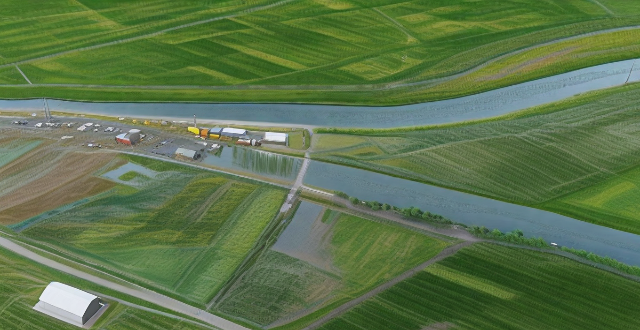Climate data analysis is crucial for disaster risk reduction and management. It helps identify high-risk areas, predict future weather patterns, develop mitigation strategies, and enhance disaster response and recovery efforts. By analyzing past and current climate data, we can better prepare for and respond to natural disasters such as floods, hurricanes, wildfires, and droughts.

How Can Climate Data Analysis Help in Disaster Risk Reduction and Management?
Climate data analysis plays a crucial role in disaster risk reduction and management. By analyzing past and current climate data, we can predict future weather patterns and identify areas that are at risk of natural disasters such as floods, hurricanes, wildfires, and droughts. This information can be used to develop effective strategies for disaster preparedness, response, and recovery.
Identifying High-Risk Areas
Climate data analysis helps us identify high-risk areas that are susceptible to natural disasters. By analyzing historical climate data, we can determine which regions are most likely to experience extreme weather events. For example, if a region has a history of frequent flooding, it may be identified as a high-risk area for future floods. This information can be used to prioritize resources and efforts for disaster preparedness and response.
Predicting Future Weather Patterns
Climate data analysis also allows us to predict future weather patterns. By analyzing current climate data and trends, we can forecast potential changes in temperature, precipitation, and other weather conditions. This information can be used to develop early warning systems for natural disasters, allowing communities to take proactive measures to protect themselves and their property.
Developing Mitigation Strategies
Climate data analysis can also inform the development of mitigation strategies to reduce the impact of natural disasters. For example, if a region is at risk of wildfires due to dry conditions, climate data analysis can help identify areas that need increased fire prevention measures, such as controlled burns or improved forest management practices. Similarly, if a region is at risk of flooding, climate data analysis can inform the development of flood control infrastructure, such as levees or drainage systems.
Enhancing Disaster Response and Recovery
Finally, climate data analysis can enhance disaster response and recovery efforts by providing real-time information on weather conditions during a disaster event. This information can be used to guide emergency response teams in their efforts to rescue individuals and protect property. Additionally, climate data analysis can inform the development of long-term recovery plans by identifying areas that may continue to be at risk of natural disasters in the future.
In conclusion, climate data analysis is an essential tool for disaster risk reduction and management. By identifying high-risk areas, predicting future weather patterns, developing mitigation strategies, and enhancing disaster response and recovery efforts, we can better prepare for and respond to natural disasters.